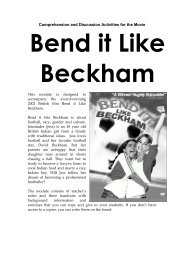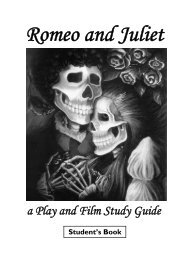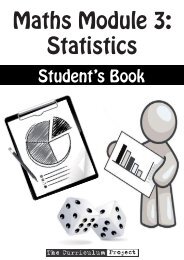Download - The Curriculum Project
Download - The Curriculum Project
Download - The Curriculum Project
Create successful ePaper yourself
Turn your PDF publications into a flip-book with our unique Google optimized e-Paper software.
C. Play audio 10.3. Students check their phrases.Answers:partly bald 1 short grey hair 7 a large beard 4 thick eyebrows 5a round face 1 a square face 6 a big, black moustache 5a pointed nose 7 short, straight hair 3 long, dark, wavy hair 6D. Students try to think of someone they know who looks like one of the leaders. <strong>The</strong>y tell the class aboutthem, and why they look similar. (<strong>The</strong>y don’t have to look exactly alike, just have some common features,like a beard, or baldness, or curly hair.)E. Write all the students’ names on small pieces of paper.Give one name to each student. <strong>The</strong>y write a short description of that student. One by one, students readtheir descriptions to the class. <strong>The</strong> class tries to identify the person.2.4 AgeA. Students match the people with the expressions.Answers: Kyi Kyi – she’s in her early 20s.Johnny – he’s middle-aged.Daw Myint – she’s elderly.Zaw Aye – he’s in his late teens.Khaing Win and Mi Lwin – they’re intheir mid-60s.After checking answers, elicit or explain the meaningof the expressions: late teens means 17, 18 or 19.Early 20s (pronounced twenties) means she’s 21,22 or 23. Mid-40s (forties) means he’s about 44-46.Middle-aged means approximately 40-60. Elderly is apolite way of saying ‘old’.B. Students estimate the ages of the people in theLanguage/Culture Notes1. A person’s age is a sensitive topic in some cultures.Unless you know a person quite well, they might notbe comfortable saying how old they are.2. In English-speaking countries, and most othercountries around the world, people give their ageaccording to their last birthday. For example, ifsomeone was born in October 1980, and now isAugust 2009, they say they are 28. In Burma, peoplesometimes give their age according to their lastbirthday, and sometimes according to their comingbirthday. This can be very confusing!descriptions using phrases like the ones in A, with early, mid-, late, middle-aged and elderly. Make surethey know that they can vary the phrases: early teens, mid-20s, etc.Possible answers:1. early teens or mid-teens 4. mid-teens or late teens2. mid-eighties or older 5. early forties or older3. late forties 6. early thirties (in 2008)C. Students estimate the ages of the world leaders from 2.3 A.Possible answers:1. Mao Zedong – late fifties 4. Fidel Castro – early seventies2. Gloria Arroyo – mid-forties 5. Joseph Stalin – early fifties3. Helen Clark – mid-fifties 6. Sonia Ghandi – early fifties7. George W. Bush – mid-fiftiesD. Students use the expressions to describe the age of themselves, their parents and their teacher.2.5 Listening: Family photoA. Pre-teach creative, naughty, strict, pipe, trendy (fashionable and modern).Play audio 10.4. Students listen, and identify the people.Answers:4 52from the pictureB. Students write descriptions of three other peoplepeople from the picture.1328 UNIT 10


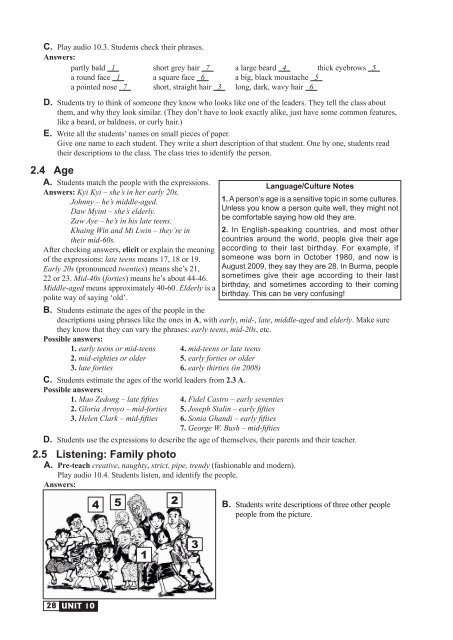
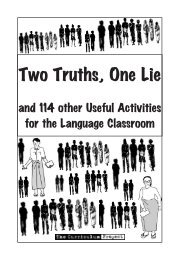
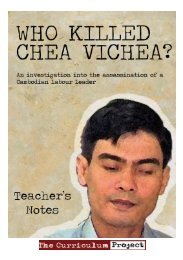

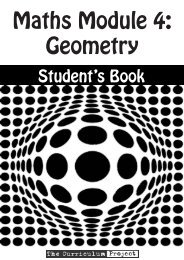

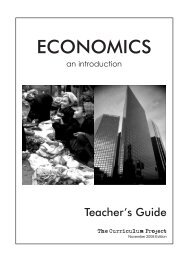
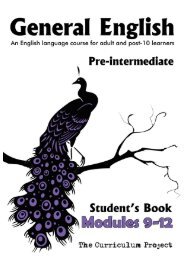

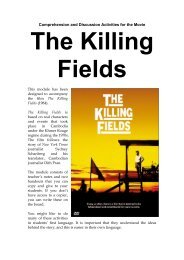
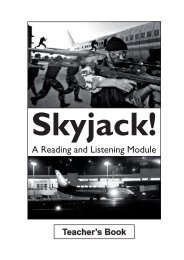
![[Eng] Nov 2012 DRAFT - The Curriculum Project](https://img.yumpu.com/45590859/1/184x260/eng-nov-2012-draft-the-curriculum-project.jpg?quality=85)
